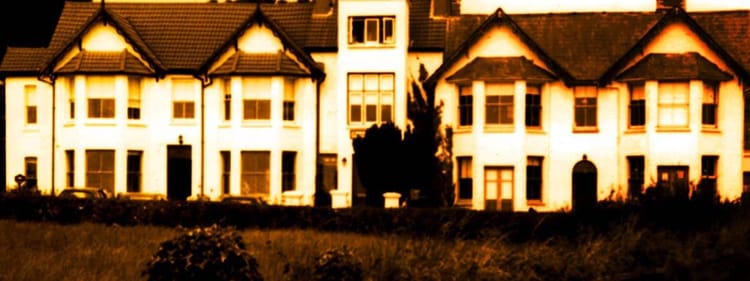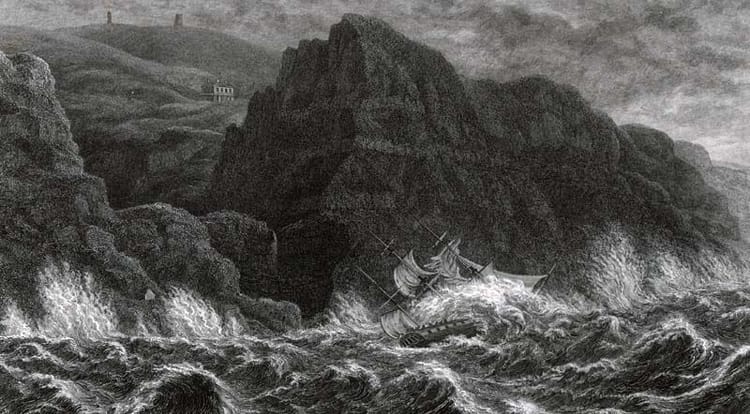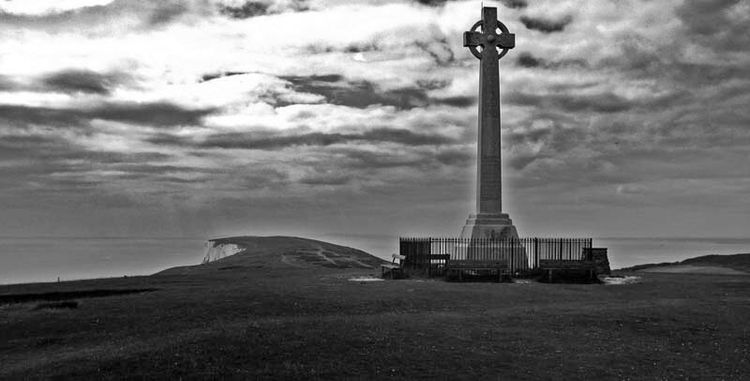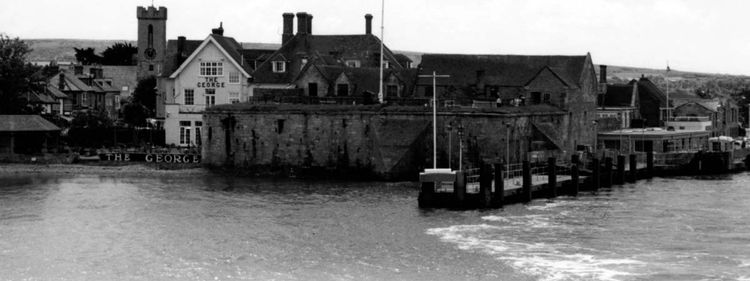Nunwell House. Ghosts of the Isle of Wight, with Margo Williams.
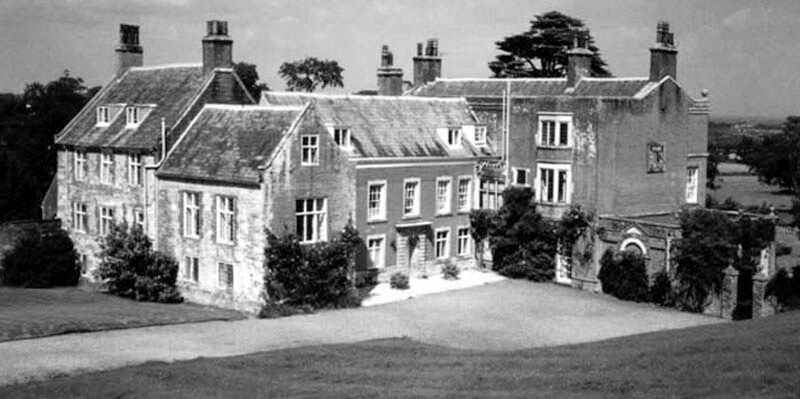
The Nunwell House Ghosts
A GREY LADY ghost was often seen drifting through rooms in Nunwell House in Ashey, near Brading. No one knew her identity but residents woken in the night described a figure in an old-fashioned ruff collar of the Elizabethan era.
Various people of doubting disposition told the resident family, the Oglanders, their Grey Lady hallucination would instantly disappear if they stopped believing in ghosts; that her tear-sodden night time journeys would cease if they adopted a more scientific attitude.
But such advice was useless, for the Grey Lady continued her visitations.
Nunwell was the home of the Oglander family for the best part of a thousand years. Each generation from the 1600s onward also inherited an open letter penned by Sir John, whose notebook of events during the 1600s included reminders to all his heirs to ensure that an Oglander was forever resident at Nunwell.
To ease difficult moments Sir John included in his book some recipes for colouring red hair to brown and for making women fruitful, but the potions ran dry and the family did not mark its millennium at Nunwell as Sir John might have hoped.
A new family moved in, and during summer months the house opened to visitors for guided tours of where King Charles I spent a night, and where an angry ghost has waited since he tried to demolish the building.
Architect of Destruction
That demolition of Nunwell House was to take place in the early 1800s during the residency of Sir William Oglander, sixth Baronet; a man who believed strongly in the benefits of fresh air.
In fact he was notorious among his tenants for arriving unannounced in their dwellings to unseal their windows without a by-your-leave.
One morning in the year 1810 Sir William accompanied his architect house guest John on a tour of his home. Up the stairs and into the room wherein King Charles I had slept for a night, his friend mmmed and aarrred as he tapped the old wooden panelling and finally said there was evidence of rats.

The architect informed Sir William the panelling had to go.
The knight shuddered. ‘Sink me! But this is the King’s Room, Nash. It’s been like it for a hundred and fifty years.’
In response, Nash scratched at the panelling, muttered about hygiene to himself, though loud enough so as Sir William would hear; and suggested the room needed more light in there, fresh air, and dare he say, bigger windows?
The thought of which was too much for Sir William’s resistance. He heard himself utter the fateful words: ‘And how much will it cost?’
The price, to Sir William’s horror, was £3000. Nash explained how the cost also included a complete makeover and redecoration with new wallpaper, and then concluded with a reassurance of his certainty that Lady Oglander would approve of the project, for the Prince of Wales himself favoured the design.
Sir William thought of rats and windows before his mind turned upon the prince.
But Lady Maria was not best pleased about the panel-removal, and when her husband enthused about how his friend Nash had a plan to tear down the rest of Nunwell House and start afresh, she was worried indeed.
She asked if it had something to do with windows.
Sir William reminded her that Nash had designed new London; of how it would be a privilege, an honour to be worked on by such a close friend of the Prince of Wales.
She gazed at the stripped walls of the old room and looked for signs of rats, but found none. She moved to the window and saw, below in the courtyard, the plumply-bald architect stomping up and down and making oddly suggestive gestures with his hands.
Lady Maria shuddered and thought upon how best to derail the madman’s plans.
John Nash did not accomplish the demolition of Nunwell House. He was persuaded to leave the island and go visit friends in Dorset; Nunwell was spared.
To this day his motive for tearing out the panels remains a mystery.

A Ghost of Nunwell House
However, despite that absence of original panelling in the King’s Room, Nunwell House remains one of the island’s architectural delights.
During summer months its present owners the Aylmer family, whose own ancestry is venerable and illustrious, gave tours of the house and talked of its fascinating history.
But neither the Oglanders nor the Aylmers realised who else remained in residence from previous times; among them the architect of Nunwell’s destruction.
The ten-person tour party waited in the music room; the lady of the house arrived, introduced herself and spoke some history of that beautiful building and its occupants.
Mrs Aylmer led us through its rooms and in each stopped and shared its history. We entered the study where Sir John composed his thoughts and wrote his notes on the changing world around him.
We stood in the oldest part of the house where King Charles and Sir John spoke privately; a room decorated with images of Charles’ life, death and presumed assumption to Heaven.
However, I found it difficult to concentrate on the lady’s fascinating talk for an insistent male ghost interrupted; his cold presence close beside me. I grabbed pencil and paper to record his words.
“...Listen not to the woman, but to me, John Nash,” he snipped. “The king was here, so listen to me. I consider, madam, that I am the most important of all who roam this house. We do not make noises or throw things about. We mean no harm and deserve to go on.
I was a favourite with the aristocracy and royalty, so therefore important enough to be freed first.
This was one of my favourite houses, small compared to many. The setting is perfect. I was responsible for so many buildings. Was the perfect man, so I thought, yet why do I remain here to wait and wait?
My passion was my sin, the passion of seduction in a secret way. No one ever ..... those who wished for my attention. I remain no longer; you set me free at last.”
Unfortunately I missed some of Nash’s words; heard a woman wail in despair then saw a ghostly grey misted shape flit across the room. Even as I climbed the panelled staircase upwards to the King’s Room I felt the Grey Lady’s agitated presence and knew I must draw her outside and let her speak.
Nash the architect died in 1835 and unknown to his hosts he did return, though no longer able to do anything more than rub along with Nunwell’s ghostly residents.
Of what truly is hidden in that house, of where and why; and how many others still are haunting, only the Grey Lady ghost of Nunwell would know, for by her own admission she saw more than most other people.
Despite Nash’s assurances to me of good behaviour, for many years the Oglanders, their guests and other residents complained of nighttime assault; slapped by ghostly hands. Sometimes a woman’s unearthly weeping woke them.

The Grey Lady of Nunwell
Quite who was responsible for the slapping we may wonder, and perhaps it was not the Grey Lady. I chose to draw her out of the house and come to me in the garden.
Beside the house stands a pretty bower where roses play upon a frame, and below lay lichen-covered stone. There I made myself comfortable, ready with paper and pencil.
A breath of wind gently rocked the bower; set the sweet rose-scented perfume afresh into the air, as she spoke.
“…Born a Dillington, died an Oglander,” she said, softly. “Within the shadows of the walls of Nunwell I walk. I durst not cleave my way out of this mist, yet I gaze at the pale moonlight with bewilderment.
Why am I remote in this forgotten state? Sweet mortal I beg that thou art not idle but send me forth to the place beyond mortal joy.
Mine head buzzed like a bee on a summer’s day with poetry so sweet, yet remained silently locked into my mind. Unknown powers were granted to me, Ann. Yet like a sheep I followed the flock to church, yet no hope had I for salvation. What I dreaded came about.
To be caught up in shadows, as chill as the grave, with a gleam of sunlight as thou appeared, melting that chill.
My visions were hidden from my spouse. This should have been shared, as my dowry was a poor one. I saw a temple of such beauty which stood not there then, or now. But the past came upon me. Farewell, I go towards joy. Thou hast not been idle.”
The ghostly Grey Lady mentioned a maiden name of Dillington and first name, Ann. With this information we searched the records and eventually found her.

Of all the bittersweet times in this great house few were so sweet and so bitter as those during the Elizabethan era residency of the first Sir William Oglander in the 1580s. He married the beautiful Ann, daughter of the Dillingtons of neighbouring Knighton Gorges house.
Family letters collected by the Oglanders remember the couple’s union as a love match. Sir William had intended to marry his wealthy cousin, but during an afternoon visit to Knighton Gorges he met and fell so in love with Ann he married her instead and regretted not the fortune he turned away.
Everyone Expects the Spanish Armada
They found romance at the same time King Philip of Spain planned to invade England with the biggest, most invincible fleet of warships ever to sail the seas: the Armada.
Armed to bursting with twenty thousand hungry soldiers, and behind them monks and torturers from the Holy Inquisition who knew but one cure for all the Protestant heresy that so afflicted God’s British Isles.
According to reports they planned to first capture the Isle of Wight. Brading probably where the Spanish troops would come ashore, and most locals expected their first house-call to be at Nunwell’s door.
For months leading up to the invasion Ann had begged her husband to move their family to a safer home on the mainland but he refused, for he commanded the Nunwell Home Guard and would not abandon his post.
July 25th 1588 the Spanish Armada arrived. During that sunny windless afternoon those seafaring Spaniards were out-manoeuvred and out-fought by Queen Elizabeth’s gallant navy.
The enemy fleet retreated to Calais and so the threat was over. Later, amid the drunken revelry and discussion on the merits of Spanish seamanship, Ann could not be consoled, or reassured it would not happen again.
She insisted their family leave Nunwell House, and so with the danger of invasion past Sir William agreed to the move.
He rented Beaulieu Abbey, and it was there Ann died nine years later. Her body was brought home for burial in the family vault in nearby Saint Mary’s church in Brading.
Then Sir William shut the windows and barred the doors again to Nunwell House and left the island. Unaware that his wife returned to her beloved home.
Thank you for your company on this short tour of Isle of Wight mysteries and haunting. If you would like to know more about Margo Williams' investigations in Nunwell House and other famous and forgotten personages, read this book. Now available from Amazon.

